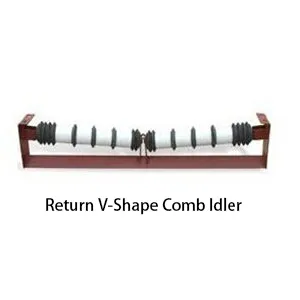 Afrikaans
Afrikaans  Albanian
Albanian  Amharic
Amharic  Arabic
Arabic  Armenian
Armenian  Azerbaijani
Azerbaijani  Basque
Basque  Belarusian
Belarusian  Bengali
Bengali  Bosnian
Bosnian  Bulgarian
Bulgarian  Catalan
Catalan  Cebuano
Cebuano  Corsican
Corsican  Croatian
Croatian  Czech
Czech  Danish
Danish  Dutch
Dutch  English
English  Esperanto
Esperanto  Estonian
Estonian  Finnish
Finnish  French
French  Frisian
Frisian  Galician
Galician  Georgian
Georgian  German
German  Greek
Greek  Gujarati
Gujarati  Haitian Creole
Haitian Creole  hausa
hausa  hawaiian
hawaiian  Hebrew
Hebrew  Hindi
Hindi  Miao
Miao  Hungarian
Hungarian  Icelandic
Icelandic  igbo
igbo  Indonesian
Indonesian  irish
irish  Italian
Italian  Japanese
Japanese  Javanese
Javanese  Kannada
Kannada  kazakh
kazakh  Khmer
Khmer  Rwandese
Rwandese  Korean
Korean  Kurdish
Kurdish  Kyrgyz
Kyrgyz  Lao
Lao  Latin
Latin  Latvian
Latvian  Lithuanian
Lithuanian  Luxembourgish
Luxembourgish  Macedonian
Macedonian  Malgashi
Malgashi  Malay
Malay  Malayalam
Malayalam  Maltese
Maltese  Maori
Maori  Marathi
Marathi  Mongolian
Mongolian  Myanmar
Myanmar  Nepali
Nepali  Norwegian
Norwegian  Norwegian
Norwegian  Occitan
Occitan  Pashto
Pashto  Persian
Persian  Polish
Polish  Portuguese
Portuguese  Punjabi
Punjabi  Romanian
Romanian  Russian
Russian  Samoan
Samoan  Scottish Gaelic
Scottish Gaelic  Serbian
Serbian  Sesotho
Sesotho  Shona
Shona  Sindhi
Sindhi  Sinhala
Sinhala  Slovak
Slovak  Slovenian
Slovenian  Somali
Somali  Spanish
Spanish  Sundanese
Sundanese  Swahili
Swahili  Swedish
Swedish  Tagalog
Tagalog  Tajik
Tajik  Tamil
Tamil  Tatar
Tatar  Telugu
Telugu  Thai
Thai  Turkish
Turkish  Turkmen
Turkmen  Ukrainian
Ukrainian  Urdu
Urdu  Uighur
Uighur  Uzbek
Uzbek  Vietnamese
Vietnamese  Welsh
Welsh  Bantu
Bantu  Yiddish
Yiddish  Yoruba
Yoruba  Zulu
Zulu conveyor take up pulley
Understanding Conveyor Take-Up Pulleys Their Importance and Function
In the world of material handling, conveyor systems play a critical role in the efficient transport of goods and raw materials. Among the various components that make up these systems, the take-up pulley stands out as an essential element that ensures the smooth operation of the conveyor belt. This article delves into the functions, importance, and maintenance of take-up pulleys in conveyor systems.
What is a Take-Up Pulley?
A take-up pulley is designed to adjust the tension of a conveyor belt during its operation. It compensates for belt elongation, which occurs due to the dynamic load and varying operational conditions. The primary objective of the take-up pulley is to maintain adequate tension in the belt to prevent slippage and wear, thereby extending the life of both the conveyor belt and the associated components.
Types of Take-Up Systems
There are two primary types of take-up systems used in conveyor belts mechanical take-up and gravity take-up.
1. Mechanical Take-Up This type typically involves a system of winches or motors that can manually or automatically adjust the position of the pulley. It allows for precise tension control and is suitable for applications where consistent performance is required.
2. Gravity Take-Up Gravity take-ups use the force of gravity to apply tension to the conveyor belt. A counterweight is attached to the take-up pulley, allowing it to move downward as the belt stretches. This type is often easier to maintain and is commonly used in applications with less stringent tension requirements.
The Importance of Proper Tension
Maintaining the correct tension in a conveyor belt is critical for several reasons
conveyor take up pulley

- Preventing Slippage If the tension is too low, the conveyor belt can slip over the drive pulley, leading to reduced efficiency and potential system failure. - Minimizing Wear and Tear Proper tension helps reduce fraying and wear on the belt and its components, thus extending the lifespan of the entire conveyor system.
- Ensuring Safety An improperly tensioned belt can pose safety risks, as slippage or breakage can lead to accidents, especially in settings where large or heavy materials are handled.
Maintenance of Take-Up Pulleys
Regular maintenance of take-up pulleys is crucial for ensuring optimal performance. This includes
- Routine Inspections Regularly checking the take-up pulley and its components for signs of wear, misalignment, or damage can prevent potential operational issues.
- Tension Adjustment Adjusting the take-up pulley as needed to maintain the correct tension in the conveyor belt is vital. This process should be part of routine maintenance schedules to ensure efficiency and safety.
- Lubrication Proper lubrication of the take-up pulley bearings and associated moving parts can prevent friction-related wear, enhancing the lifespan of the pulley and belt.
- Monitoring Load Conditions Keeping track of the load on the conveyor can help anticipate necessary adjustments. Sudden changes in load may require immediate adjustments to tension.
Conclusion
The conveyor take-up pulley may seem like a small component in the grand scheme of a conveyor system, but its role is undeniably significant. By ensuring the proper tension of the conveyor belt, take-up pulleys enhance the efficiency and safety of material handling operations. Through regular inspections and proactive maintenance, industries can avoid costly downtimes and extend the lifespan of their conveyor systems. Understanding the importance of take-up pulleys is an essential step for anyone involved in the design, operation, or maintenance of conveyor systems, ultimately contributing to a more productive and safe working environment.
-
Revolutionizing Conveyor Reliability with Advanced Rubber Lagging PulleysNewsJul.22,2025
-
Powering Precision and Durability with Expert Manufacturers of Conveyor ComponentsNewsJul.22,2025
-
Optimizing Conveyor Systems with Advanced Conveyor AccessoriesNewsJul.22,2025
-
Maximize Conveyor Efficiency with Quality Conveyor Idler PulleysNewsJul.22,2025
-
Future-Proof Your Conveyor System with High-Performance Polyurethane RollerNewsJul.22,2025
-
Driving Efficiency Forward with Quality Idlers and RollersNewsJul.22,2025





























